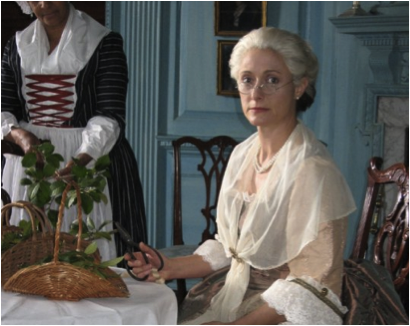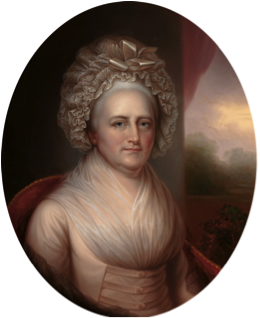BreakingModern — We all know Hollywood can be pretty monotonous when it comes to its featured body types. However, I’ve noticed a few inaccuracies that happen all the time but constantly seem to go completely unnoticed. And these problems aren’t just in schlocky films or corny blockbusters — they’re in serious films with award-winning performances and celebrated “realism.”
It seems we, as a society, can conveniently forget what actual people or a normal human body looks like. (Though given our track record, that’s not a huge surprise. After all, we’ve only just begun to watch biblical movies with all white actors and say, “Hey, wait a minute, something’s not quite right here.”)
In any case, here are a few weird and confusing trends regarding human bodies in film … in case you too missed them in the theatre.

Case #1: The Mysterious Shrinking Historical Women
Last year I took a trip to Mount Vernon, George Washington’s plantation home in Virginia. In the overwhelmingly pro-American short film before the tour (apparently good ol’ G.W. was as close as mankind ever came to perfection) I noticed that the lovely Martha Washington lacked her usual stocky frame and double chin.
They also got rid of that fabulous bonnet of hers. What a pity.

It happened again as I watched the film Lincoln, with the petite Sally Field playing the notably plump Mary Todd Lincoln. In Catherine the Great, the fleshy monarch gets turned into Catherine Zeta-Jones. Queen Victoria occasionally gets to be her large self when she’s a minor character (see Kathy Bates in Around the World in Eighty Days) but when she takes the lead role she loses about 10 dress sizes and becomes Dame Judi Dench or Emily Blunt.
Of course, I’d be lying if I said I don’t have some idea as to why this happens so often. People aren’t exactly shy about vocalizing their distaste for extra flesh (if you don’t believe me, go read some YouTube comments). But it’s striking that no one seems to notice when the appearance of real historical figures — you know, actual people depicted in multiple paintings and photographs — shrink in the stories we tell about them.
It’s almost as if we assume the thin = successful equation of recent years was also somehow practiced by our foremothers. Or maybe we believe that no one in history was fat ever (a disturbingly prevalent assumption — I’ve had friends insist that people weren’t fat until the ’80s). But in a post-Orange is the New Black world, I truly believe mankind can handle the truth — that female historical figures occasionally weighed more than 120 pounds.

Case #2: The Case of the Disappearing Underarm Hair
It happens almost invariably in Hollywood movies and TV shows. Whether a woman has spent the last five years on a desert island, sails a pirate ship, commands an army or runs from anything from the police to zombies, she always always always has pristinely shaved underarms and legs. (And if she doesn’t, it’s newsworthy.)
As a woman who shaves, I can tell you that this upkeep is nigh impossible without the proper equipment and would be the last thing on my mind in the face of imminent destruction. So why does no one notice when hair is omitted time and time again?
I say if we can have rape for historical accuracy in stories like Game of Thrones, we can have hairy armpits on our female protagonists. If people can handle torture scenes, surely they can handle a little leg hair every once in a while. Really, are we supposed to believe Khaleesi travels around with a Venus razor tucked in the back of her tunic? “Hold on guys, I know there’s a battle, but I have a bit of stubble I need to take care of.”
Lady hair isn’t even included films marketed on the merits of their “gritty realism” and “harsh honesty.” Surely that should raise some eyebrows in the general hair-having population. But no — as a culture, we’ve collectively forgotten that nearly 100 percent of women naturally sprout hair in areas other than the top of their heads. We don’t even miss it when it’s gone.

Case #3: The Skin Tone Mystery
This issue, at least, gets a little bit of airtime — not that it doesn’t fly under the radar for most viewers most of the time.
As I looked at the promotional pictures for the new X-Men movie, something struck me. A light skinned young woman is once again playing the character Storm, a character that is consistently drawn with dark skin in the comics. I mean, she’s supposed to be from a Kenyan mother and an African-American father.
This phenomenon actually happens fairly often, with light skinned women even playing dark-skinned ladies from history like Harriet Tubman and Nina Simone.
The thing is, why? No one with eyes and access to Lupita Nyong’o’s People magazine cover can say deep skin isn’t stunning and attractive. So why try to erase it? The only explanation seems to be a lingering white-central standard of beauty. Which is a pretty gross thing to have, after all these years. So why don’t more people feel outraged when their favorite character suddenly looks … whiter?
Perhaps someday, we won’t have to ponder these mysteries anymore.
Notice anything else that seems “off” about bodies in your favorite movies? Let us know in the comments below.
For BMod, I’m Alison Maney.
All Screenshots: Alison Maney







![Who’s Going to Get “Lucky” This NBA Season? [commentary]](../wp-content/uploads/2015/10/HEADER4-60x60.jpg)
![Pete Rose Continues to be Out of Step with Major League Baseball [commentary]](../wp-content/uploads/2015/10/HEADER2-60x60.png)

![Cooking Fever [review]](../wp-content/uploads/2015/11/HEADER1-321x214.png)
![Assassin’s Creed Syndicate [review]](../wp-content/uploads/2015/11/HEADER3-60x60.jpg)
![The Legend of Zelda: A Link to the Past [manga review]](../wp-content/uploads/2015/10/HEADER3-60x60.png)
![Madden NFL Mobile [review]](../wp-content/uploads/2015/09/header3-60x60.jpg)